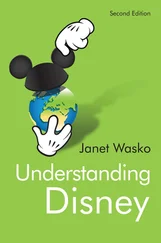One might also argue that the “nude” body, even when not portrayed to illustrate directly sexual themes, is affected, at least indirectly, by the artist’s sexuality and/or sexual elements that are embedded in his or her culture. For example, are the nudity and temptation themes in the creation story of Adam and Eve truly without sexual connections? Of course not: this biblical creation story is itself, partially, about sex. Thus, Dürer’s sexual attractions likely inspired him, if only on an unconscious level, to create a painting that included these themes. In other words, this story was, arguably, aesthetically interesting and pleasing to him because of his sexual attractions. That members of the public (or the patrons who commissioned this work) also wanted and/or were drawn to such portrayals also speaks to the power of sexuality in the production of this and related art. Note, too, that the two main figures—Adam and Eve—in this famous painting have fig leaves covering their genitals. This depiction is true to the events in the biblical creation story itself, as both Adam and Eve covered themselves with fig leaves after eating from the tree of knowledge. However, sexual mores probably influenced why this portion of the creation story—and not the innocent, completely nude period of this story—was depicted in this and in so many other versions of it. For example, it can be argued that Dürer was affected by his and society’s (e.g., the Catholic Church’s) view that public nudity was shameful, or at least sexually immodest, not just in reality but also in artistic depictions. This social construction of sex as “shameful” also derives from the power of sexual attractions, along with a (neurotic) desire to control them.
You may be thinking that the female nude in art and popular culture must only have a special resonance, aesthetic and otherwise, for heterosexual men (i.e., male artists and male patrons), and thus heterosexual women wandering the great galleries must have a disconnected experience, similar perhaps to the non sequitur experienced by average asexual people. After all, shouldn’t the portrayal of only men ’s bodies have a special resonance, aesthetic and otherwise, for heterosexual women? I think this is partially true, but a straightforward conclusion of this kind does not capture some of the subtlety and complexity of female sexuality. As mentioned in chapter 6 on gender, women’s sexuality is also affected by “object-of-desire” concerns, and there may be a strong aesthetic appreciation of the female body as an object of desire, sexually and romantically, in the eyes of men (Bogaert & Brotto, in progress; Bogaert, Visser, Pozzebon, & Wanless, 2011). Thus, heterosexual women’s sexual interests, attractions, and desires at times may still resonate, perhaps very strongly, with the depiction of the female nude form. That many heterosexual women are strongly interested in viewing beautiful women in fashion forums (e.g., fashion magazines) and in the general media (e.g., on TV, on the Internet) supports this view (Bogaert & Brotto, in progress).
Some of these points are arguable, perhaps, but what is likely not arguable is that our cultural products are strongly influenced in ways beyond our realization by human sexual attractions and how these play themselves out in the society in which the artist lives. If so—to return to our original question—what would our art galleries be like if all the artists were completely asexual? Before I answer this question, however, let me address a caveat: There may exist now or in the past asexual artists who, in their art, give commentary on being asexual in a sexual world. Thus, asexual people might still produce “sexual” art as a form of social or personal commentary. But I am more curious about what kind of art asexual artists would produce if they ruled the art world and their asexual brethren ruled the rest of the world. In other words, what would it be like if art had no aesthetic linkage to sexuality whatsoever? [39] Of course, if we were an asexual species, our bodies would be radically different, particularly the genitals and secondary sex characteristics (see chapter 3). Thus the depiction of the nude human body in art would also necessarily be different. But indulge me here and assume that our bodies would be the same as they are now, as this exercise partly concerns how a sexual species with an elaborate culture, like ours, creates products infused with sex.
Would depicting a nude (and the genitals in particular) have the same fascination, and garner the same attention, as depicting, say, the middle toe does for sexual artists? I expect that in a completely asexual world, art would be very different indeed. Thus, the current bevy of nude paintings—even those that on the surface seem not to have a sexual connection, but undoubtedly do, such as Dürer’s Adam and Eve —would turn into a scattered few. Moreover, all of this to-do about what is “nude” and what is “naked” deeply reflects our sexual natures, along with our personal and cultural neuroticism about them. Thus, if we were all truly asexual, such distinctions would not arise in the first place; they would be nonissues.
My analysis here suggests that culture (or at least the meanings we derive from it) is not randomly generated but instead reflects, at least partly, our basic wishes, desires, and preferences—in short, our individual and our collective human natures. And, of course, for most people, that nature is sexual. Humans are also very visual animals, and thus it is not surprising that our sexualized pop culture and art reflects this visual acuity and fascination. So human art is particularly likely to be a visual reflection of our basic wishes, desires, and preferences, including our sexual ones. If dogs ruled the world—and, of course, some dog owners believe that this is already so—then there might be equally elaborate smell -oriented pop culture and art that reflected canines’ basics wishes, desires, and preferences, including sexual ones. Of course, the idea that culture partially maps onto human nature is not new, as there are many theories of culture that include as a tenet that human inclinations create, select, and give meaning to cultural products. [40] Therefore, my view would be similar to those of numerous (and even more biologically oriented) theorists who have written on the intermingling of biological tendencies and culture. These theorists often do not pull punches and are upfront about biology, or at least biological processes, taking the reins of the cultural horse, by offering such titles as Genes, Mind and Culture: The Coevolutionary Process (Lumsden & Wilson, 1981) and Culture and the Evolutionary Process (Boyd & Richerson, 1985). Richard Dawkins has also argued (e.g., in The Selfish Gene , 1976) that cultural ideas, like genes, are “selected for” (like Darwin’s natural selection) if they have a special resonance with people in a given time or place. He calls them “memes,” and, yes, it is probably no coincidence that this word sort of rhymes with “genes.” Note, however, that by suggesting a similarity between my view and these biologically oriented theories of culture, I don’t mean to imply that all of our wishes, desires, and preferences are fully biologically determined. They are not.
Would an asexual person’s presumed lack of sexual aesthetics extend to a lack of appreciation for all aspects of beauty in the human form? I noted in chapter 3 (on history) that one asexual man, the famous mathematician Paul Erdos, was preoccupied, including aesthetically, by mathematics: “If numbers aren’t beautiful, I don’t know what is” (Schechter, 1998, p. 7).
Yet there is complexity here. Some asexual people may have an appreciation of faces and the body on an abstract level, having taken in our culture’s norms and standards of beauty. In addition, some asexual people may still have a deep recognition and lure for “romantic” beauty in others of their preferred sex if they are romantically inclined. Third, humans may have an innate recognition of beauty, independent of both romantic and sexual attraction to others. Indeed, innate “beauty” and “ugliness” sensors may exist in the human brain, and this may have to do with tendencies to approach or avoid others in the evolutionary past. For example, our ancestors may have avoided unattractive people because their unappealing features could have been a sign of a potentially contagious disease processes, and thus they would have been important to avoid. Interestingly, research has shown that infants prefer to gaze at beautiful faces more than average or unattractive faces (Langlois, Roggman, Casey, & Ritter, 1987). Thus, the mind’s beauty-recognition mechanisms may be partially decoupled from the mechanisms associated with both romantic and sexual attraction, and an asexual person may still retain some level of this appreciation for beauty.
Читать дальше












